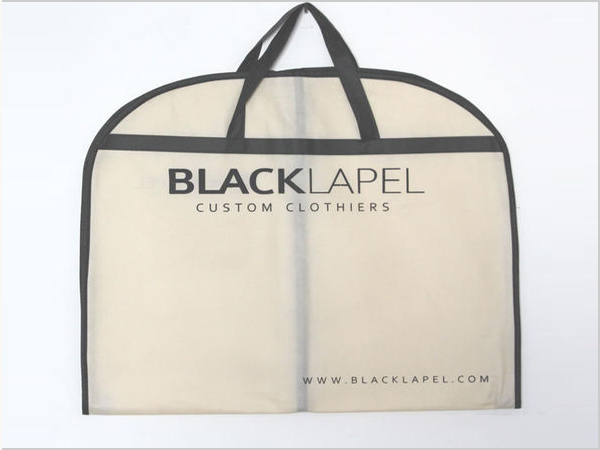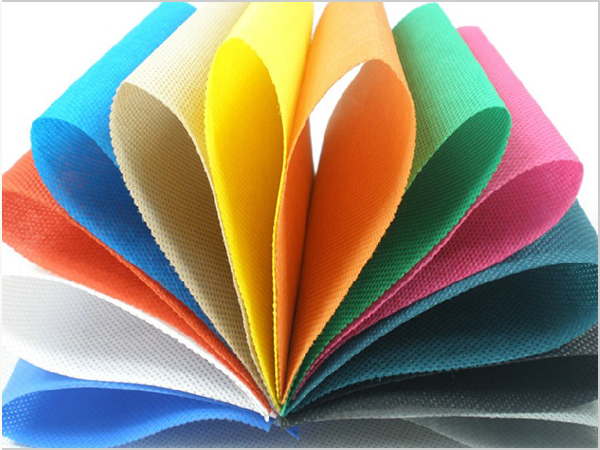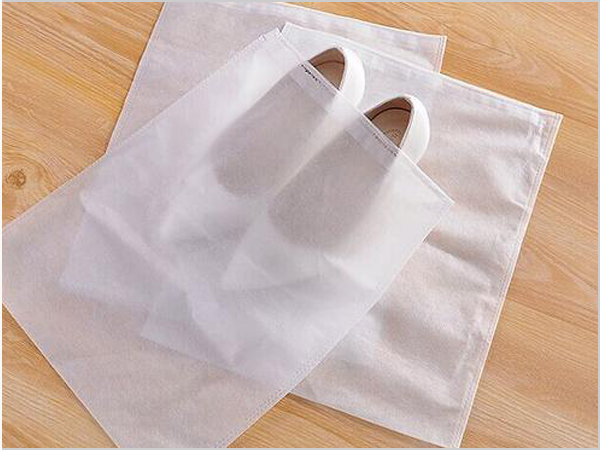- Xiangshuo has stood out in the field of spunbond nonwoven fabrics!
- How should enterprises respond to the impact of repeated tariffs
- PP non-woven fabric is a new type of environmental protection material!
- Under the tariff challenge, the textile and garment industry has a new opportunity
- Spunbonded non-woven fabric is an efficient, multi-functional modern material!

- Telephone: 0551- 66779966
- Cellphone: 18955130444
- Email: 58792982@qq.com
- Address: Building 1-2, East of Wubu Village Section, Hehuai Road, Wushan Town, Changfeng County, Hefei City, Anhui Province
In the production process of spun-bonded non-woven fabrics, various factors may affect the physical properties of the product. Analyzing the relationship between these factors and product performance is helpful to correctly control the process conditions and obtain polypropylene spunbond non-woven products with good quality and wide applicability. Here, I will briefly analyze the main factors affecting the physical properties of spunbond non-woven fabrics and share them with you.
1. Melt index and molecular weight distribution of spun-bonded non-woven fabric polypropylene chips
The main quality indicators of polypropylene chips are molecular weight, molecular weight distribution, isotacticity, melt index and ash content. The molecular weight of PP chips used for spinning is between 100,000 and 250,000, but it has been proved that the rheological properties of the melt are the best when the molecular weight of polypropylene is about 120,000, and the maximum allowable spinning speed is also high. . The melt index is a parameter that reflects the rheological properties of the melt. The melt index of polypropylene chips for spunbond is usually between 10 and 50. In the process of spinning into a web, the filament is only drawn once by air flow, and the drawing ratio of the filament is limited by the rheological properties of the melt. The smaller the draw ratio obtained by the sliver, the larger the fineness of the sliver obtained under the condition of the same melt output from the spinneret, so the spunbond nonwoven fabric exhibits a hard hand. If the melt index is larger, the viscosity of the melt will decrease, the rheology will be better, and the drafting resistance will decrease. Under the same drafting conditions, the drafting multiple will increase. When the orientation degree of macromolecules increases, the breaking strength of the spunbond non-woven fabric increases, and the fineness of the filaments decreases, and the fabric appears soft to the touch. Under the same process, the higher the melt index of polypropylene, the smaller the fineness and the greater the breaking strength.
The molecular weight distribution is often measured by the ratio (Mw/Mn) of the weight average molecular weight (Mw) to the number average molecular weight (Mn) of the polymer, which is called the molecular weight distribution value. The smaller the molecular weight distribution value, the more stable the rheological properties of the melt and the more stable the spinning process, which is beneficial to increase the spinning speed, and has lower melt elasticity and extensional viscosity, which can reduce the spinning stress. It makes PP easier to stretch and thin, and finer denier fibers can be obtained, and the uniformity of the web is better, with good hand feel and uniformity.
2. Spinning temperature of spun-bonded non-woven fabric
The setting of the spinning temperature depends on the melt index of the raw material and the requirements for the physical properties of the product. The higher the melt index of the raw material, the higher the spinning temperature, and vice versa. The spinning temperature is directly related to the melt viscosity, and the temperature is low. The viscosity of the melt is high, spinning is difficult, and it is easy to produce broken filaments, stiff filaments or thick filaments, which affects the quality of the product. Therefore, in order to reduce the melt viscosity and improve the rheology of the melt, the method of increasing the temperature is generally adopted. Spinning temperature has a great influence on fiber structure and properties. The lower the spinning temperature, the higher the elongational viscosity of the melt, the greater the elongation resistance, and the more difficult it is to stretch the filaments. To obtain fibers of the same fineness, the drafting airflow speed is higher when the temperature is low. Therefore, under the same other process conditions, when the spinning temperature is lower, the fiber is difficult to draw. The fiber has a large fineness and a low degree of molecular orientation, which shows that the breaking strength of the spunbond non-woven fabric is low, the elongation at break is large, and the hand feel is hard; when the spinning temperature is high, the fiber draft is better, and the fiber The fineness is smaller, the molecular orientation is higher, and the spunbond non-woven fabric is characterized by higher breaking strength, smaller breaking elongation and soft hand feeling. However, it is worth noting that under certain cooling conditions, if the spinning temperature is too high, the resulting yarn will not be cooled enough in a short period of time, and some fibers will break during the drawing process, which may cause defects. In actual production, the spinning temperature should be 220-230℃.
3. Cooling and forming conditions of spun-bonded non-woven fabrics
During the forming process of spunbond nonwovens, the cooling rate of the strands has a great influence on the physical properties of spunbond nonwovens. After the molten polypropylene comes out of the spinneret, if it can be cooled quickly and uniformly, the crystallization rate is slow and the crystallinity is low. Relatively large, the orientation of the molecular chain is better, which can further increase the crystallinity, increase the strength of the fiber, and reduce its elongation. , the obtained fiber has a stable monoclinic crystal structure, which is not conducive to the drafting of the fiber. It is manifested in a small breaking strength and a large elongation on the spunbond non-woven fabric. Therefore, in the molding process, the method of increasing the cooling air volume and reducing the temperature of the silk chamber is usually used to improve the breaking strength of the spunbond non-woven fabric and reduce the elongation. In addition, the cooling distance of the thread is also closely related to its performance. In the production of spunbond non-woven fabrics, the cooling distance is generally selected between 50 and 60 cm.
Anhui Xiangshuo Nonwovens Technology Co., Ltd. is located in Xinqiao Industrial Park, Hefei City, Anhui Province, close to Jiangsu, Zhejiang and Shanghai, with convenient transportation, covering an area of 42 acres. The company was established in July 2019 with a registered capital of 10 million yuan. Committed to the development and production of environmentally friendly non-woven consumables, it is an emerging production enterprise with complete equipment and strong technical force. It has been rated as a key investment attraction enterprise in Xinqiao Industrial Zone, Hefei City.
Anhui Xiangshuo Nonwovens Technology Co., Ltd. currently has PP nonwoven and polypropylene spunbond nonwoven production lines, with a width of 1.8m-3.2m and a gram weight of 9-250g/m2. The products are green and environmentally friendly products with the characteristics of flame retardant, anti-aging, anti-static, acid and alkali resistance, non-toxic, pollution-free and degradable.
The main experience scope of Anhui Xiangshuo Nonwovens Technology Co., Ltd.: research and development, production and sales of non-woven fabrics, non-woven products, and new non-woven materials; chemical fiber equipment, non-woven equipment manufacturing and sales; plastic masterbatch functional masterbatch R&D, production and sales; R&D, production and sales of outdoor products; R&D, production and sales of PE woven tarpaulins, furniture covers, plastic nets, trash cans, and plastic greenhouses.
If you need non-woven fabrics, spun-bonded non-woven fabrics, pp non-woven fabrics, and outdoor products, you can contact us. If you want to know more about our company, please contact: Mr. Xiang, mobile phone number: 18955130444
- Xiangshuo has stood out in the field of spunbond nonwoven fabrics!
- How should enterprises respond to the impact of repeated tariffs
- PP non-woven fabric is a new type of environmental protection material!
- Under the tariff challenge, the textile and garment industry has a new opportunity
- Spunbonded non-woven fabric is an efficient, multi-functional modern material!
- By the wind of gold, silver and silver, Keqiao Textile set sail
- PP non-woven fabrics occupy an important position in many fields!
- Textile industry is tested How should textile people cope with such challenges?
- What is the production process of spunbonded nonwovens?
- How to achieve revenue growth driven by policy dividend and technological revolution?



